I don’t see the point of single triggers on a game gun. In my view the maxim ‘just because you can doesn’t mean you should’ applies in this case, quite firmly.
The mid-19th century saw gunmakers working hard to make breech-loaders less complicated, more robust and more reliable.
They succeeded and Westley Richards succeeded, perhaps more so than any other maker. The Anson & Deeley boxlock non-ejector reduced the moving parts of a lock from seven to three, achieved automatic cocking by using the barrels as a lever and created a supremely reliable, robust, efficient, sporting gun.
the next quest was on; to make a gun with one trigger that fired both barrels.
Having done that, gunmakers, aware that the public wanted guns that they could fire and re-load ever faster, then began making automatic ejectors. With those becoming commonplace, the next quest was on; to make a gun with one trigger that fired both barrels.
Westley Richards did not initially approve. In a 1900 Land & Water article the firm’s opinion was that ‘for practical purposes the necessary complication of working parts more than counterbalances any advantage’.
None-the-less, the public wanted single triggers so Westley Richards, like everyone else, developed one to install in their guns; specifically, in their boxlocks.
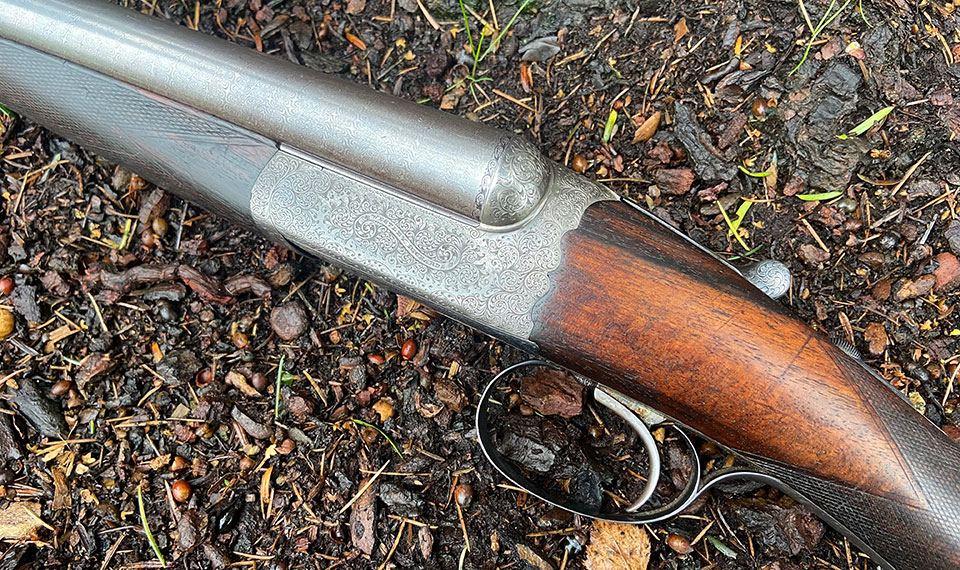
The patentee was Westley Richards grandee John Deeley (The Elder) and gunmaker James Penn of Handsworth. It was patented in 1895 and given patent number 21,346. Later, Westley Richards adopted a better single trigger by American inventor Alan Lard, of Missouri, who allowed Leslie Taylor of Westley Richards to patent it in Britain: No.3952 of 1899.
The system was declared the; ‘Patent One-Trigger’ and this wording was engraved on the top lever of any gun so fitted. Here we can see it applied to a 1904 Westley Richards drop-lock with the single selective trigger and another, made in 1911 to match it.
The first gun illustrated here is No.16172, which arrived with its almost-twin, No.16419. It appears the later gun was made to match the first; they are engraved ‘1’ and ‘2’ but there are subtle differences if you look closely. Confusingly, the earlier number predates the later one.
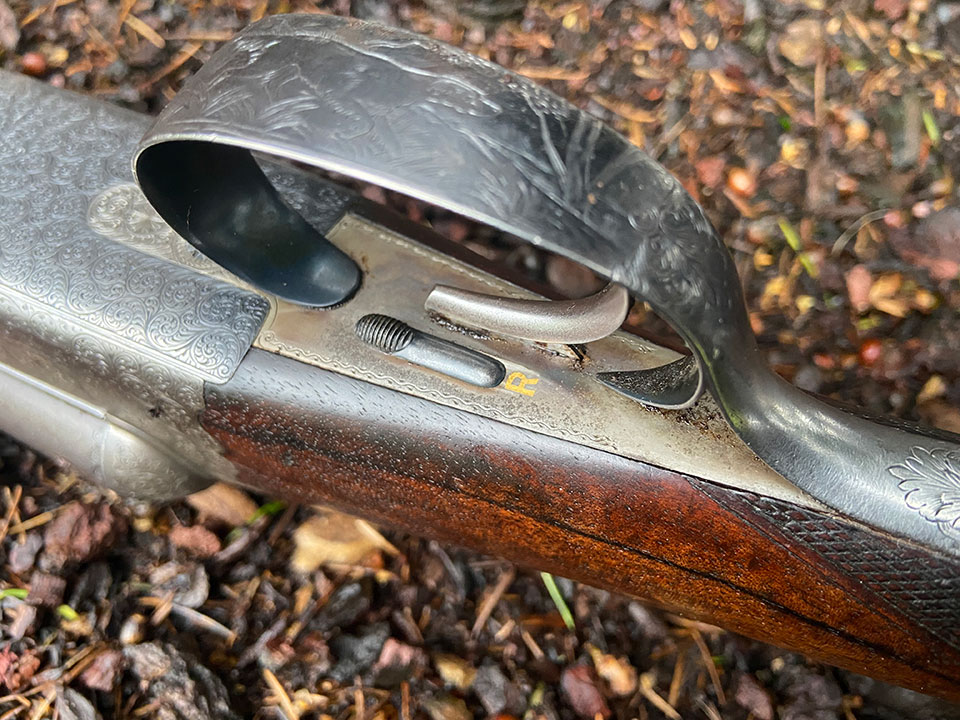
These guns actually embody a great deal of what made a best Westley Richards game gun in 1900. They have the Westley Richards patent top-lever and bolted doll’s-head rib extension, which provides a third bite, with the main security provided by a Purdey double under-bolt.
The locks are Deeley & Taylor patent 1897 hand-detachable locks, colloquially known as ‘drop-locks’. This clever design took the component parts of the Anson & Deeley and mounted them on a steel plate, which can be inserted from below, when the bottom-plate is removed. All this can be done without the need for tools.
These guns have an early version of the system, with a plate which fully comes away from the action when un-clipped. Later versions have a hinge on the bottom edge so it swings like door and cannot be mis-placed or dropped.
The ejectors are the patent of John Deeley (The Younger), who also worked for Westley Richards.
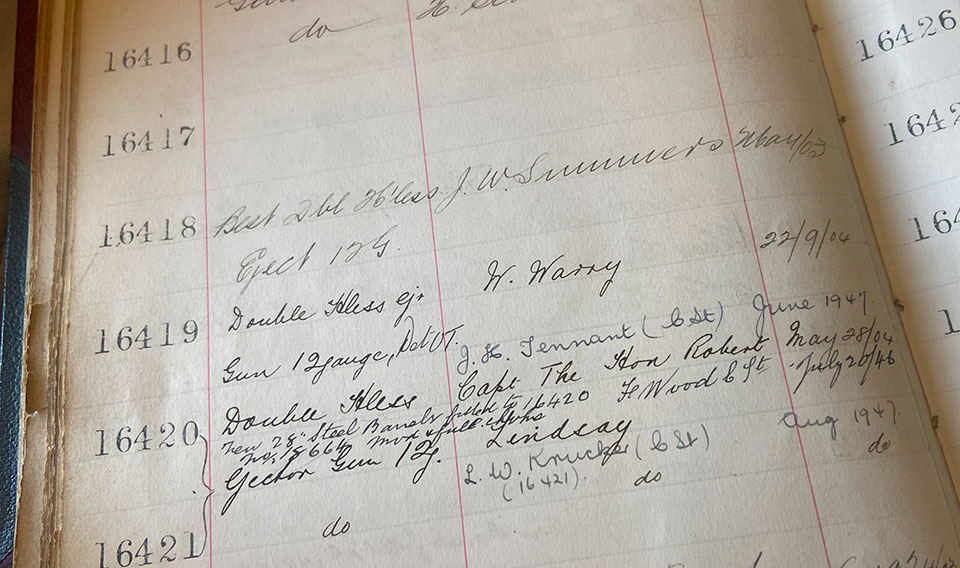
Patent use numbers help us see how early in a patent’s life a particular gun was made. For the No.1 gun, the single-trigger use number is 299 and the hand-detachable locks are number 638.
In the case of gun No.2, The Deeley & Taylor drop-lock patent 17731 of 1897 shows use number 308 and Lard patent single-selective trigger No.3952 of 1899 shows patent use number 1457, which shows just how many were being made - not just by Westley Richards.
The gunmakers at Westley Richards prefer the Lard trigger to the original one, because it is relatively simple and easy to repair and maintain.
This pair of guns came from a family that had owned them from new. The owner’s grandfather was the purchaser. As is sometimes the case, some of the original documents and ephemera remained with the gun.
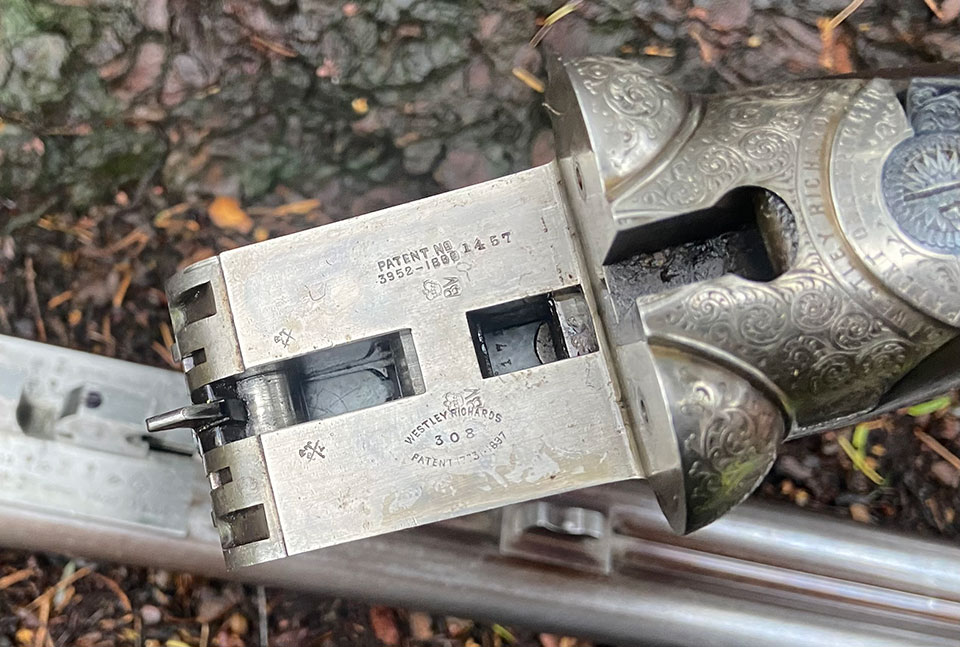
These included a load data card, showing one of the guns (No.16419) to have been regulated to shoot 42 grains of Amberite powder and 1 1/8oz of No.6 shot. The same gun was choke-regulated to shoot 133 pellets into a thirty inch circle at forty yards from the right barrel and 134 from the left. The test card is still with the gun.
Also in the case is a small tin, containing a cloth ‘Selvyt’ pad with instructions to use it for wiping the locks after dis-assembly. While of no commercial value, relics from he day the gun was delivered link us to the original workers and sportsmen who were as enthusiastic and dedicated to their guns as we are today.
I’m still not convinced they are of any merit.
As for single triggers, I’m still not convinced they are of any merit. These guns are gummed-up with grease, having been un-used for thirty years, but I very much hope they work once they have been serviced!
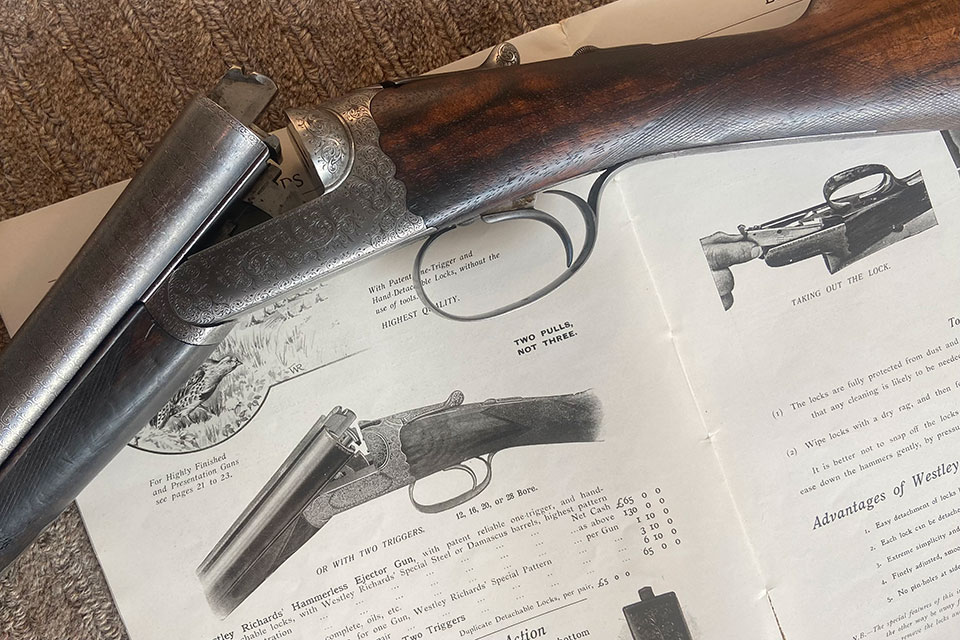
It is unusual to find very early guns of this type that have not been refurbished or modified since manufacture. They have been used well and have been relatively well maintained. They remain very true to their original specifications and their condition very much reflects their age and working lives.
I will be very careful to merely strip, clean and service the mechanical parts of these guns, without altering their cosmetic appearance.
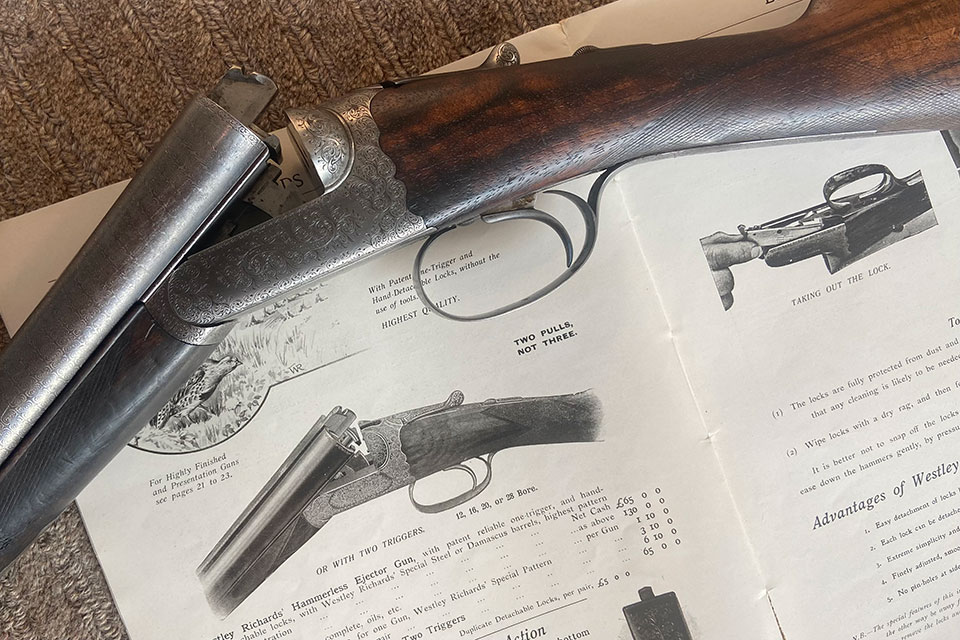
Published by Vintage Guns Ltd on




